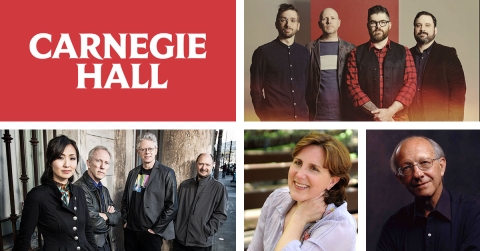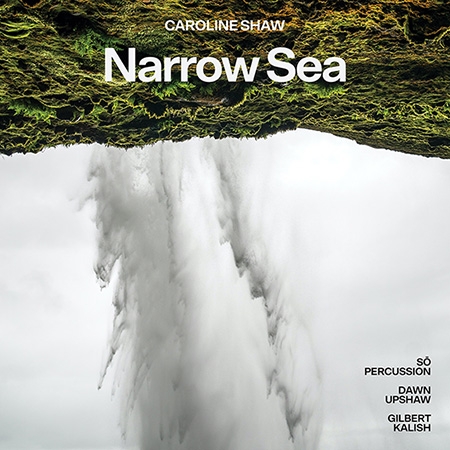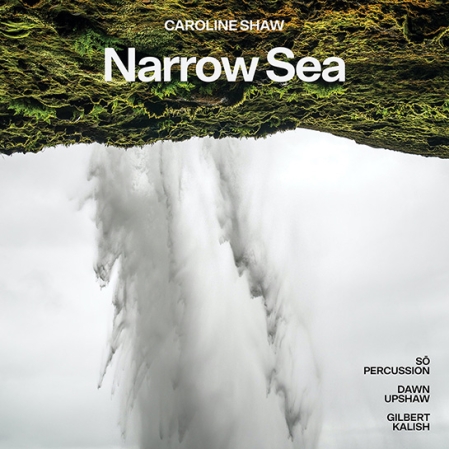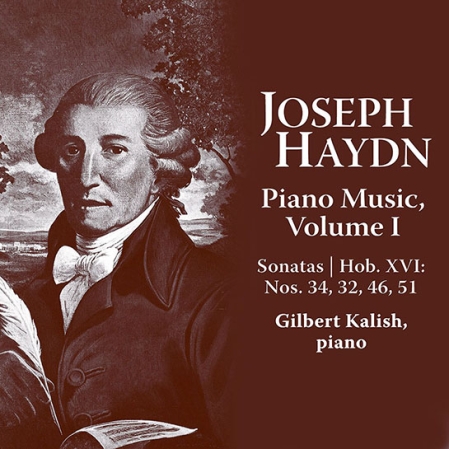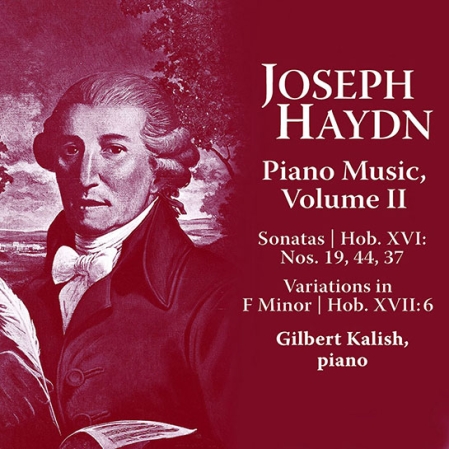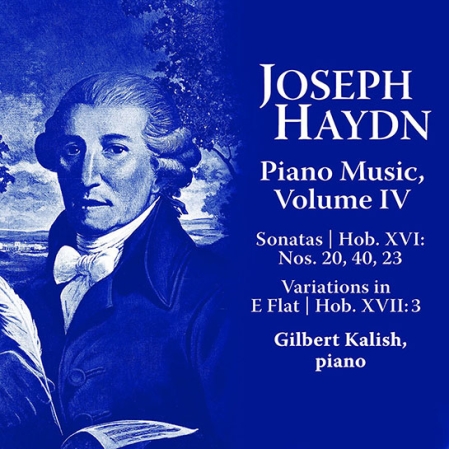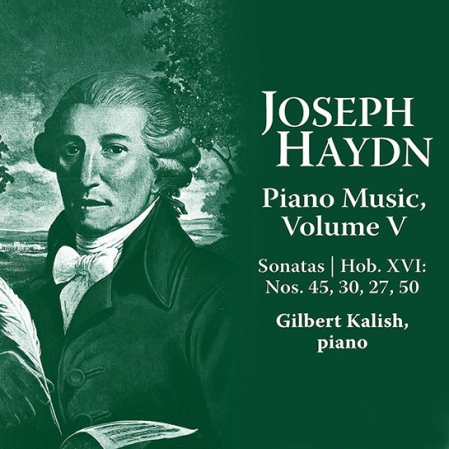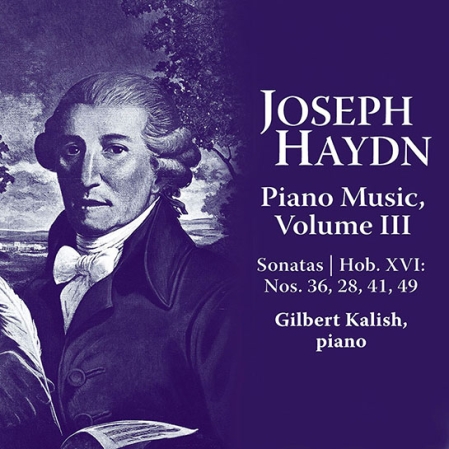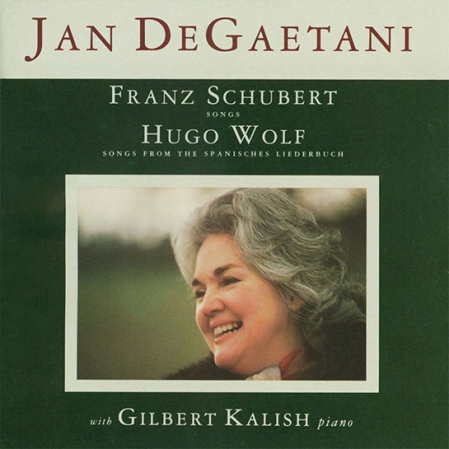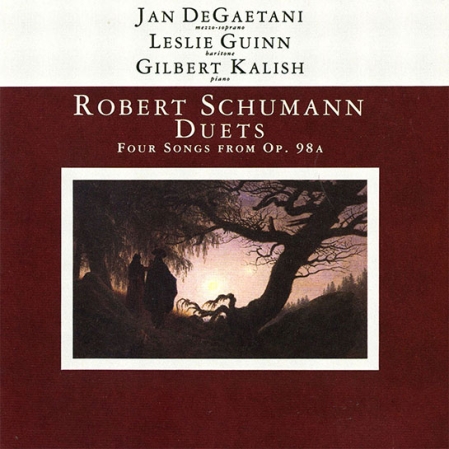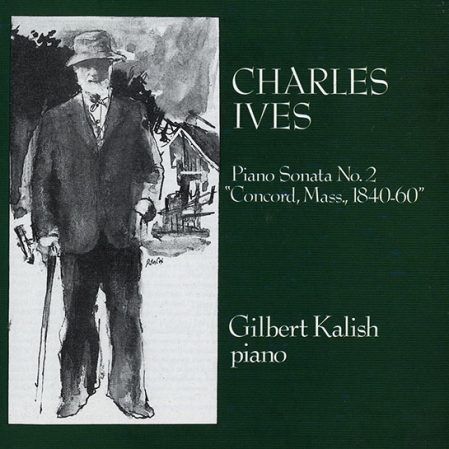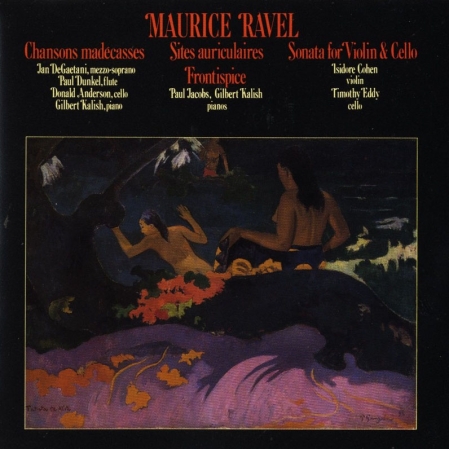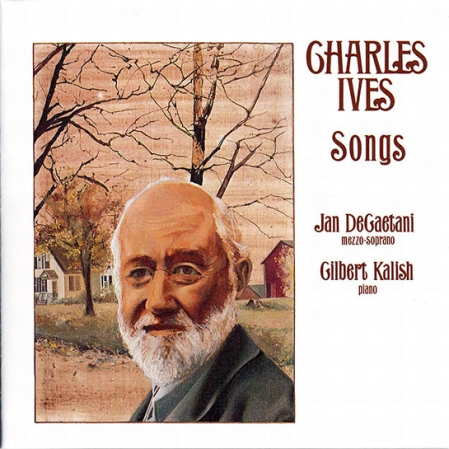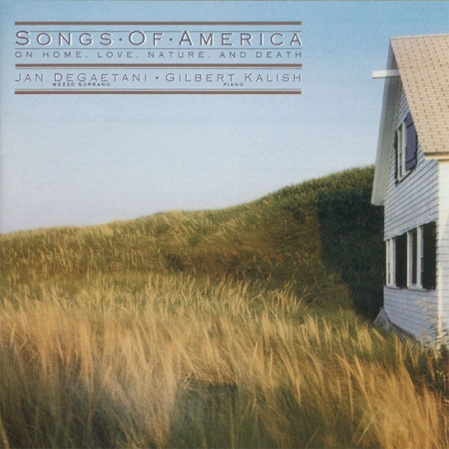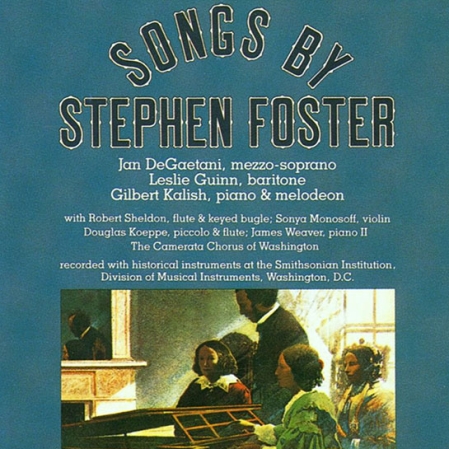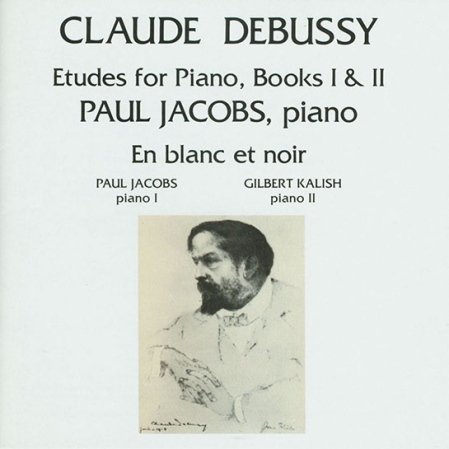Between 1975 and 1980, Nonesuch released a series of five LPs of pianist Gilbert Kalish performing the rarely recorded Haydn piano sonatas. Now, on the 200th anniversary of the composer's death, the recordings are being reissued, this time as digital albums. Volume III includes the sonatas Hob. XVI: Nos. 36, 28, 41, and 49.
Between 1975 and 1980, Nonesuch Records released a series of five LP recordings of pianist Gilbert Kalish performing piano works—the rarely recorded sonatas and variations—by Joseph Haydn (1732–1809). Now, on the 200th anniversary of the composer's death, the recordings are being issued again for the first time since 1980, this time around as digital albums. Volume III includes the sonatas Hob. XVI: Nos. 36, 28, 41, and 49.
Here, the pianist reveals the story behind and discusses the reaction to the initial recordings:
By 1975, it had become a delightful and well-established tradition for Tracey Sterne, who was then head of Nonesuch Records, to celebrate the conclusion of a recording project by opening a bottle of good cognac and sharing it with the artists and producers in a spirit of relaxed satisfaction. At the time, I had just finished a particularly difficult recording session, at the end of which my collaborator (who shall remain nameless) stormed out without a word to anyone.
Even amidst the turmoil, dear Tracey continued her lovely post-recording tradition, and while we were all at our ease and in a mellow frame of mind, she said the following to me, "Gil, you really deserve a solo recording after what you've been through this week. What would you choose to do if we gave you that opportunity?"
I answered immediately: the Haydn Sonatas. At that time, these were undervalued, mostly unknown works that deserved a hearing (as is the case even today, nearly 35 years later), and there were few if any recordings of any of them. Tracey jumped at the idea, and that conversation led to the recording of a single LP. It was not meant to be a series of recordings, but the reaction to the music was so strong and positive that the project developed a life of its own, and we did five full-length LPs of the Haydn. Only one of these LPs was transferred to CD at the time, and so this digital release, on the 200th anniversary of the composer's death, makes the entire set available once again for the first time in more than three decades.
—Gilbert Kalish, 2009
Below is the liner note from the original album release in 1977:
Haydn lived at the remote Hungarian castle of Eszterháza, where his employer, Prince Nicolaus Esterházy, spent most of the year surrounded by a coterie that included a German theatrical troupe, an Italian opera company, and an orchestra of 24 under Haydn’s direction, but for a short period around Christmas, Prince Nicolaus had to pay his respects at court in Vienna, and Haydn would take the opportunity of these trips to order new music, procure horn crooks, strings, and other odds and ends for his orchestra, and see friends an professional associates. At Christmastime of 1779, it appears, he arranged the sale of six keyboard sonatas—Hob. XVI:20 and 35–39—to the clever Italian publishers Artaria & Comp., who within a few short years had cornered the market in Vienna; the arrangement marked the beginning of a long and fruitful relationship between Artaria and Haydn. The composer began delivery of the sonatas soon after his return to Hungary; on January 31, 1780, he wrote from Esterháza to Artaria:
Nobly born Gentlemen!
I send you herewith the 6th pianoforte sonata [Hob.VXI:20, in C minor], because it is the longest and most difficult; I will certainly deliver the 5th [Hob. XVI:39, in G major] in the next few days; meanwhile I remain, in the greatest haste, Messieurs,
Your most obedient servant,
Joseph Haydn mpria.
Within a month, Artaria had completed the engraving of all six sonatas and sent them to Haydn, who wrote back on February 25,
I send you herewith the corrected proofs of all 6 sonatas, and ask you to study them as carefully as possible; those numbers marked in red are the most urgent of all.
Artaria’s edition appeared in April, with an Italian title page that read, in translation,
Six Sonatas for Harpsichord, or Fortepiano. Composed by the Celebrated Mr. Joseph Haydn. Opus XXX. Dedicated to the Most Fair Ladies Caterina and Marianna von Auenbrugger by their Most Humble and Obedient Servants, Artaria & Comp …
As the title indicates, the publishers themselves had chosen the dedicatees—a common practice at the time. The two von Auenbrugger sisters were talented pianists, the daughters of a well-known physician and scholar, Leopold von Auenbrugger of Graz. Haydn thought highly of them; in his letter of February 25, he wrote,
The approval of the Misses von Auenbrugger is most important to me, for their way of playing and genuine insight into music equal those of the greatest masters. Both deserve to be known throughout Europe …
The Sonata Hob. XVI:36 in C-sharp minor (a very rare key in those days) in No.2 of Artaria’s publication; together with that in C minor used to close the set, it provides a stormy contrast to the prevailingly sunny tone of its companions. The terse and explosive opening movement is balanced by a light second movement, called “Scherzando” by the composer, in the relative major; a pensive minuet in the home key of C-sharp minor with a beautiful trio in the parallel major brings the piece to its conclusion. The principal theme of the “Scherzando” recurs almost unaltered in the G-major sonata; Haydn had a note inserted at the start of the edition to explain that he had used the theme twice with the intent of demonstrating the different ways in which the same material could be treated. “For of course,” he wrote to Artaria on February 25,
I could have chosen a hundred different ideas instead of this one; but so that the whole opus will not be exposed to blame on account of this one intentional detail (which the critics and especially my enemies might interpret wrongly), I think that this avertissement of something like it must be appended, otherwise the sale might be hindered thereby.
Throughout much of his career, Haydn kept a kind of running draft catalogue of his music, in which he entered the titles and, most often, the themes of his works—usually in blocks set down at intervals of two or three years, whenever he found time to do so. This catalogue, known to scholars as the Entwurf-Katalog, is a gold mine of information on matters of chronology, authenticity, and so on. One of the entries without themes reads 6 Sonaten von Anno 776; these turn out to be the sonatas Hob. XVI:27-32, which circulated as a group in manuscript copies bearing the date 1776. The first printed edition was issued in 1778, probably without Haydn’s authority, by the publisher J.J. Hummel, who had offices in Berlin and Amsterdam. As usual in those days, the title page stressed that the works could be played on either the harpsichord or piano—as the Haydn scholar Karl Geiringer once remarked, you never wanted to forget those delightful old ladies who still owned a spinet but had enough money to buy the latest music. The Sonata Hob. XVI:28, in E-flat, is typical of the set in its easygoing sophistication. Its broad opening movement gives way to a minuet with predominating triple rhythms and a trio in E-flat minor, and a gay, fast finale.
In 1783, Prince Nicolaus’s grandson, the future Prince Nicolaus II, married a beautiful and vivacious princess from the great and noble house of Liechtenstein. Marie Hermenegild Liechtenstein made a fatal error, however, in marrying young Nicolaus, for he turned out to be a lecherous roué who eventually set up a little house in Vienna decorated with obscene frescoes (and with mirrors surrounding the beds) for his hundreds of girlfriends. Haydn was very fond of the princess and later, from London, dedicated three of his finest piano trios to her (Hob. XV:21-23). When he came back from England in 1795, his principal task was to write a Mass every year for Marie Hermenegild’s name day—an assignment that produced the great series of six Masses (including the “Nelson Mass” and the “Mass in Time of War”) that mark the final sustained highpoint of his career.
The first dedication to Princess Marie, however, was a set of three piano sonatas, Hob. XVI:40-42, published by a German called Bossler in Speyer, with whom Haydn was in friendly contact. The sonatas came out in August 1784, so they would appear to have been Haydn’s wedding present to the princess the year before. The Sonata in B flat, No.2 in the set, is, like its companions, in two movements, the first a bright Allegro, the second an Allegro di molto with a bold middle section in B-flat minor. Throughout, the music shows a special sense of delicacy and grace, which seem to reflect the dedicatee. But it is also music for a real connoisseur: neither the subtle chromatic inflections in the first movement nor the intimations of “learned” polyphony in the second is for ordinary ears. The dynamic markings, though sparse, show that Haydn had left the old ladies and their spinets unprovided: the calando (a decrescendo) just before the recapitulation in the first movement cannot be played on a normal harpsichord.
The autograph manuscript of the final sonata on this record, Hob. XVI:49 in E flat, bears the date June 1, 1790, and a dedication to Maria Anna Gerlischek, housekeeper to Prince Esterházy and the wife of a raffish violinist in the Esterházy orchestra named Johann Tost, for whom Haydn wrote his string quartets Op. 54, 55, and 64. Neither the date nor the dedication, however, reveals the true history of the sonata. Haydn’s correspondence shows that Frau Tost—or “Mademoiselle Nanette,” as he called her—had in fact commissioned the work as a present for Marianna Anna von Genzinger, the wife of the emperor’s personal physician and a lady immensely esteemed by Haydn. As the composer confided to Frau von Genzinger in a letter of June 20, 1790, moreover most of the piece was not newly written:
This sonata was destined for Your Grace a year ago, and only the Adagio is quite new, and I especially recommend this music to your attention, for it contains many things which I shall analyze for Your Grace when the time comes, it is rather difficult but full of feeling.
There is a world of difference between this and the final E-flat sonata of 1794 for Therese Jansen (Hob. XVI:52), as there is between the Op. 64 quartets for Tost of 1790 and the quartets Op. 71 and 74 for Haydn’s London impresario, Johann Peter Salomon. In this sonata, there is a sense of leisure, of unlimited time, that Haydn’s experience in London—the first real metropolis that he saw—would soon change forever. There is even a certain old-fashioned quality, for instance in the Baroque sequences that open the development section of the first movement. But the most striking part of this movement originates in the repeated-note figure sounded just before the end of the exposition. Two-thirds of the way through the development, Haydn takes this rhythmic lead and gives us a passage of remarkable tension, in which he also lovingly relishes the lowest range of the piano—in those days, the region down to F an octave below the lowest note of the bass clef. The slow movement, newly written for Frau von Genzinger, is of exceptional depth and beauty. At the beginning of the second section, there is a rhapsodic and intense passage in the parallel minor, with rolling sextuplets in the right hand, that is almost Schubertian. Here the left hand crosses the right, and Frau von Genzinger found this so difficult that she asked the composer to rewrite the passage; if he did so, the new version has not survived. The finale is a “Tempo di Menuet” (Haydn’s spelling) with a fine passage in E-flat minor and the same sense of leisurely growth seen in the rest of the sonata (note, for example, the gradual incorporation of triplets instead of even eighths). By a happy coincidence, it seems, Frau von Genzinger had asked Haydn to write a minuet for her just at the time he was preparing the sonata; the third movement, despite, its earlier origins, could now satisfy her wish and serve as “the very minuet and trio,” as Haydn wrote on June 20, “for which Your Grace asked me in your last letter.”
—H.C. Robbins Landon, 1977
PRODUCTION CREDITS
Engineering and Musical Supervision: Marc J. Aubort and Joanna Nickrenz, Elite Recordings Inc.
Original album mastered by Robert C. Ludwig, Masterdisk Corp.
Coordinator: Teresa Sterne
Album originally released as H-71344 in 1977
519789
MUSICIANS
Gilbert Kalish, piano



